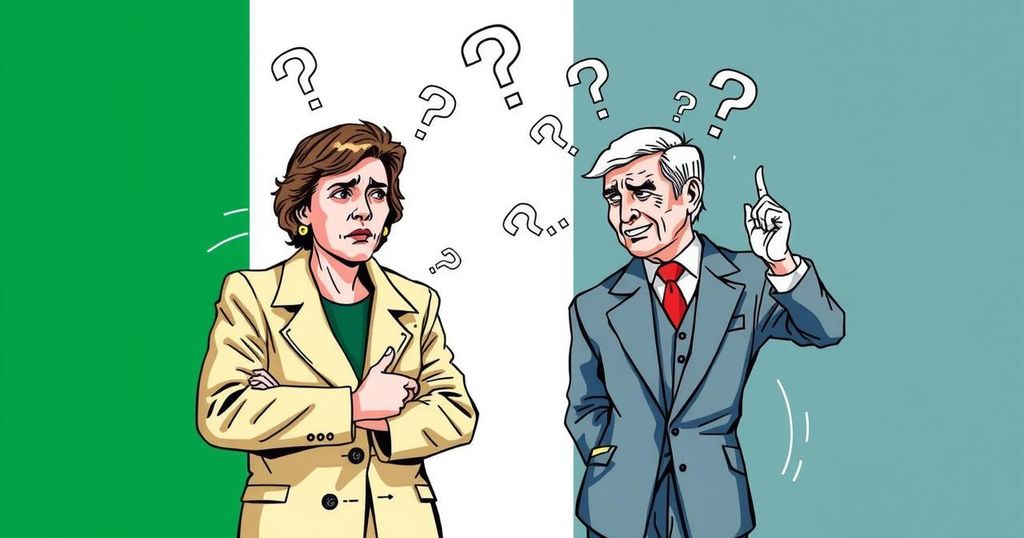Challenges for Ireland’s Prime Minister Harris Ahead of Election
Prime Minister Simon Harris of Fine Gael faces potential fallout from an awkward interaction with a voter, prompting questions regarding his leadership. As Sinn Fein gains ground in public opinion, analysts ponder the implications for the upcoming election. Despite the challenges, it is anticipated that a coalition government may still persist after the votes are counted.
In a surprising turn of events just days before the electoral votes are cast in Ireland, Prime Minister Simon Harris faces significant scrutiny for an encounter with a voter that could tarnish his reputation. Harris, of the Fine Gael party, has led an administration praised for its stability; however, a miscommunication with a concerned citizen has raised questions about his leadership. Meanwhile, Sinn Fein, the nationalist party, is reportedly gaining ground in the polls, complicating the landscape for the ruling coalition. Observers anticipate that despite this turmoil, a continuation of the unity coalition between Fine Gael and Fianna Fáil remains on the horizon.
The political climate in Ireland has recently showcased the two centrist parties, Fine Gael and Fianna Fáil, as resilient against global shifts toward governmental change. Since 2020, these parties have successfully governed together, yet the approaching election has seen new dynamics due to a notable slip by Prime Minister Simon Harris. This incident may have repercussions that reshape public perception and electoral outcomes as Sinn Fein seeks to capitalize on the shifting sentiments among voters.
In conclusion, Prime Minister Simon Harris’s recent encounter with a voter has become a pivotal moment in the lead-up to Ireland’s elections. While Fine Gael has seen a decline in polling, the likelihood remains that a coalition will uphold its majority. Overall, Harris’s mishap serves as a reminder of the fragility of political favor and the potential influence of public interactions on electoral prospects.
Original Source: www.nytimes.com




Post Comment